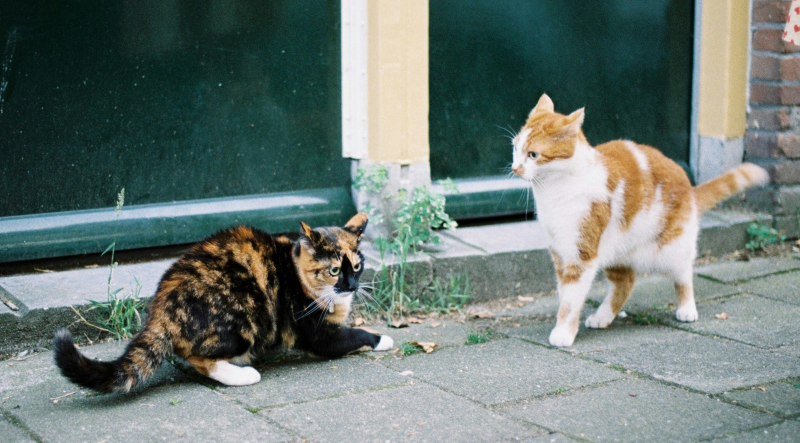
Your cat’s territory is important to them. It’s where they feel safe enough to eat, sleep, play and relax without being threatened by other feline intruders. They mark it via scent or scratches — their way of signaling to other cats “be warned, this is my patch”.
And if another cat crosses that line, all hell can break loose.
Whether it’s in the garden, a nearby street or inside the house, stopping your cat from fighting other cats can be difficult, sometimes impossible. And as a cat parent, that can cause high levels of stress, knowing that your cat may get injured by the neighborhood bully.
But there are ways you can attempt to stop your cat fighting other cats, whether your cat is the victim or the aggressor.
Why do cats fight?
To start, it’s helpful to understand some of the reasons and situations when your cat might be involved in a fight.
Cats are by nature solitary animals, preferring to be by themselves with little to no interaction with other felines. If they come across another cat, some level of interaction is usually required and this can lead to tension.
If one or both of the cats show aggression, then these tensions become significantly raised.
Most cats will do all they can to avoid conflict before things elevate to a fight, as they do not want to suffer an injury. They’ll display warning signs such as raising their hackles, arching their back, raising their tail, swiping or batting, and vocalizing noises such as hissing and yowls.
If this does not deter the intruder and neither cat will back down, the next step is likely to be a fight. This could be due to dominance – male cats especially might fight if another cat has marked within their territory.
Often you might also find that a new cat on the block causes problems by trying to assert dominance over the other neighborhood cats by laying claim to certain areas or spots. This is where you might need to step in to attempt to calm tensions.
How to stop cats fighting
If you own more than one cat and they are enemies rather than friends, there are a number of ways you can help them get along rather than ramping up the tension.
- Provide a bowl of food for them each, plus an extra bowl so that the aggressor won’t attempt to steal the other’s food.
- Give them their own separate spaces within the house so they can retreat there if they need to get away from other cats. It should contain their own bed and space up high in which to hide if they feel they need to get away from everything (and everyone).
- Play with each cat individually. This helps them expend excess energy, stress and anxiety by focusing on one-on-one play.
Other situations where you can help your cat if they’re having problems with aggression and fighting:
- If you’re having an issue with cats coming into your house and bullying your cat inside your own home, it could be worth investing in a microchipped cat flap. This only allows your cat through while locking out other cats.
- If your cat is causing fights, neutering them may help lower their aggression levels. Unneutered cats are often more territorial, so neutering can lower that drive.
- Attempt to introduce a schedule for times when you allow your cat to go outside – and if you know the owner of the other cat causing problems, try to organize the schedule so that only one cat is outside at a time, thereby reducing the chance of them interacting with each other.
We uphold the highest editorial standards when creating the authoritative content pet parents rely on and trust.
Every piece of clinical content on the Cat Food Advisor is reviewed by our certified Veterinary Advisory Board, which consists of licensed veterinarians and medically certified specialists.
Our reviews are completely independent; we are not paid by any pet food company to promote their products favorably. We do not accept money, gifts, samples or other incentives in exchange for special consideration. For more information see our Disclaimer & Disclosure page.








